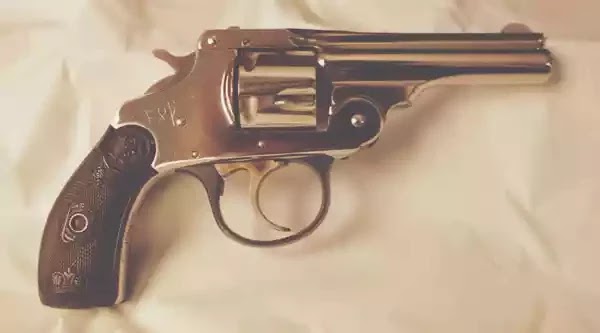Like the assassins of Presidents Lincoln and Garfield, anarchist Leon Czolgosz shot President William McKinley at point-blank range. Eight days later, after enduring inept medical treatment, McKinley died.
by Robert Walsh
“I killed the President because he was an enemy of the good people – the good working people. I am not sorry for my crime. I am only sorry I could not get to see my father.” Assassin Leon Czolgosz, while being strapped into the electric chair in New York.
On September 6, 1901 at the Pan-American Exposition’s Temple of Music, President William McKinley became the third U.S. President to be assassinated. Like his unfortunate predecessors, James Garfield and Abraham Lincoln, he was shot at close range in circumstances that would not have existed given more solid security measures.
Like so many assassin’s victims, he was the antithesis of his killer. McKinley was an American blue-blood with distinguished reputations in law, politics and the Civil War. After rising from private to major during the Civil War, McKinley practised law in Canton, Ohio before his election to Congress in 1976. After losing office in 1890 he served as governor of Ohio in 1891 and 1893. He won the Republican nomination for President in 1896.
McKinley’s presidency marked a return to strong economic prosperity after a recession during the 1890’s. It also saw him lead the United States successfully through the Spanish-American War, the assimilation of Puerto Rico, Guam and the Phillipines (all former Spanish colonies), Cuba becoming effectively (if not formally) under U.S. control and Hawaii (then an independent republic) being annexed in 1898. McKinley gained re-election in 1900, again defeating William Jennings Bryan as he had in 1896 on a platform of sound economics and protectionism for U.S. jobs, workers and financial interests.
Leon Czolgosz, on the other hand, was a penniless, unemployed, immigrant steelworker with deep-rooted bitterness against wealthy, successful, powerful men like McKinley. Czolgosz was also believed to suffer from significant mental imbalance.
Mental illness isn’t unusual in high-profile assassinations; the "lone wolf" types are often outwardly insignificant until they decide to strike. They often seem outwardly quiet and unobtrusive until impulsively making their move. It’s their very unpredictability that makes them so dangerous. Professional assassins assess the risk, plan ahead and have contingency plans if possible. What bodyguards the world over fear most is a random, unpredictable attacker who isn’t spotted in time to be stopped.
Leon Czolgosz
Leon Czolgosz
Czolgosz was one of seven children, born to poor immigrant parents in Alpena, Michigan on May 5, 1873. He started work at the age of 10 at the American Steel & Wire Company in Cleveland, Ohio, spending the next decade at the factory amid appalling working conditions that radicalized his politics and, many believe, damaged his mental health. An economic slump in 1893 saw him unemployed, penniless and embittered against those living lives of luxury and privilege while many ordinary Americans lived either on or below the poverty line. The 1890’s saw him drift from one low-paid job to another, never holding work for long. It was during this period that his politics, already radical, turned towards anarchism.
Czolgosz began attending meetings and rallies to ingratiate himself with the many fragmented groups passing for a coherent anarchist movement at the time. The groups, however, disliked his social ineptitude, his openly advocating violence and his habit of asking blunt, intrusive questions. Few habits make anarchists more suspicious than a stranger probing their inner workings. Czolgosz quickly found himself rebuffed, suspected of being an undercover agent, an agent provocateur or both.



No comments:
Post a Comment